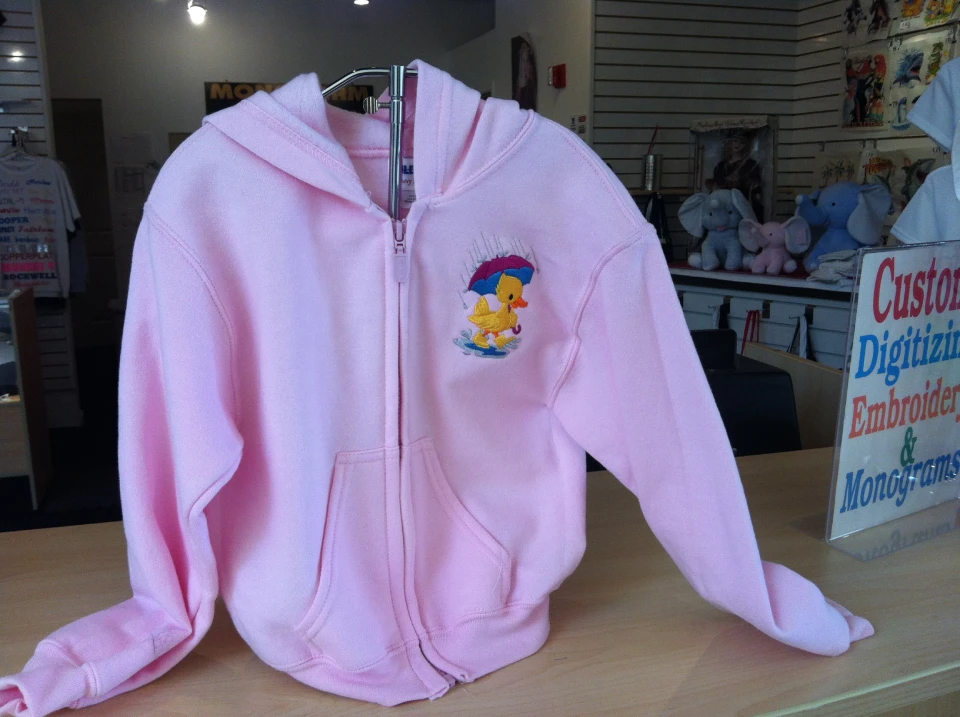Personalized Mugs with Personalized Embroidery Styles for a Distinct Present
Personalized Mugs with Personalized Embroidery Styles for a Distinct Present
Blog Article
The Art of Customized Needlework: Unlocking the Tricks to Creating Unique and Memorable Layouts
Needlework, a craft soaked in custom and artistry, holds within its detailed stitches the power to change textile right into a canvas of special expression. The keys to creating custom-made needlework layouts that astound the eye and leave a long lasting perception hinge on a fragile equilibrium of strategy, imagination, and attention to information. As we look into the world of customized needlework, we reveal the nuanced interaction in between string selection, sew intricacy, and style customization that raises a plain garment to an artwork. Join us on a journey with the art of custom embroidery as we unwind the enigmas behind crafting absolutely extraordinary and distinctive creations.
Picking the Right Embroidery Threads
When choosing needlework threads, what crucial factors should you take into consideration to guarantee the ideal results for your custom designs? The selection of needlework string is crucial in identifying the final outcome of your embroidered design.
Thicker strings can include dimension and structure to your layout, while finer threads are perfect for elaborate details and tiny message. Furthermore, taking into consideration the shade fastness and washability of the thread is important to guarantee that your custom-made designs keep their quality and vibrancy over time.
Exploring Different Stitch Methods
To look into the world of 'Checking out Different Stitch Techniques', one should grasp the ins and outs and subtleties that each sewing approach offers the art of embroidery. Different stitch techniques not just add aesthetic passion but likewise add to the total appearance and measurement of the design. One preferred stitch technique is the satin stitch, which involves very closely jam-packed parallel stitches to produce a smooth and glossy surface, perfect for filling out forms and creating vibrant outlines.
On the various other hand, the backstitch is a functional technique typically made use of for detailing and adding fine information. It entails sewing backwards to develop a solid line of needlework. In addition, the French knot stitch adds a tactile aspect to styles, best for developing textured accents like flower centers or attractive touches.
Discovering various stitch techniques allows embroiderers to play with light, darkness, and depth within their layouts, boosting the aesthetic charm and imaginative high quality of their embroidery projects. By mastering various stitching techniques, one can unlock countless opportunities for creating special and unforgettable custom-made needlework items.
Incorporating Personalized Style Aspects
Having actually discovered the intricacies of various stitch methods such as the satin stitch, backstitch, and French knot, the emphasis now moves in the direction of integrating tailored design elements in custom embroidery jobs. Personalized layout aspects play a crucial function in making embroidery projects genuinely distinct and remarkable. One means to include customization is by including initials, names, or significant days to the style. This not just includes a customized touch but likewise enhances the sentimental worth of the embroidery item.
One more method to include personalized layout components is by consisting of symbols or motifs that hold special significance to the recipient or reflect their interests and individuality. Including a favorite blossom, pet, or hobby-related icon can make the embroidery layout a lot more meaningful and customized. Additionally, picking shades that reverberate with the recipient or align with the intended style can further check this boost the personalization of the needlework project.
Grasping the Art of Shade Sychronisation
One secret aspect of shade sychronisation is understanding color theory. This consists of knowing exactly how various shades engage with each various other, the feelings they share, and just how they can be integrated to produce aesthetically enticing styles. By using color theory concepts, embroiderers can produce unified shade palettes that boost the overall look of the style.
Furthermore, paying focus to contrast is important in my site color coordination. Using contrasting colors can help specific components of the design pop, enhance clarity, and produce a visually dynamic embroidery piece. By understanding the art of color coordination, embroiderers can elevate their layouts and develop remarkable items that reverberate with clients and audiences alike.
Enhancing Structure With Advanced Needlework Stitches

Bullion knots, on the various other hand, can be utilized to produce twisted, ropelike elements that include a lavish feel to the needlework. Trying out with these sophisticated embroidery stitches enables check these guys out you to press the borders of traditional embroidery and create genuinely unique and visually appealing appearances in your layouts.
Conclusion
In verdict, the art of custom needlework involves a combination of picking the best strings, discovering various stitch methods, incorporating individualized design components, mastering shade sychronisation, and improving texture with advanced stitches. By understanding and applying these crucial elements, embroiderers can produce unique and memorable layouts that showcase their creativity and ability. Embroidery enthusiasts can unlock the keys to developing beautiful and bespoke items that attract attention and leave an enduring impact.
Report this page